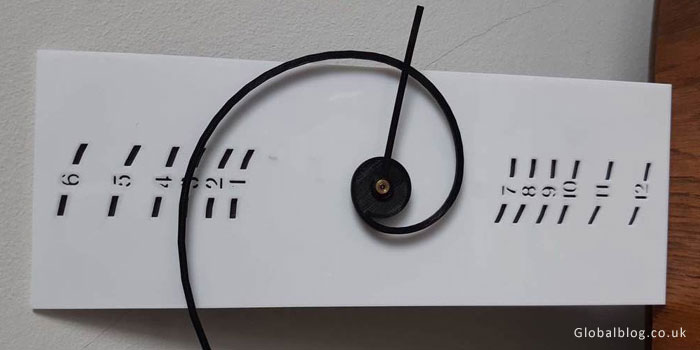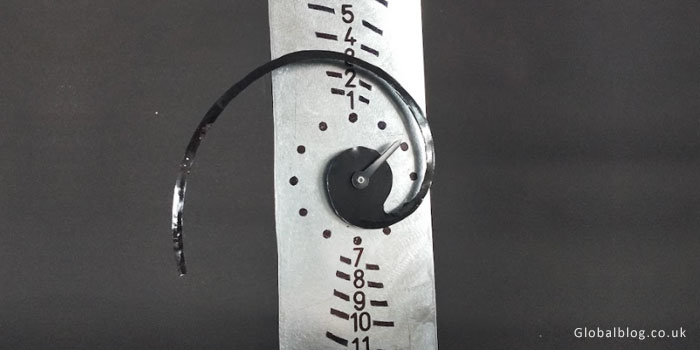Introduction to the Fibonacci Clock
Have you ever glanced at a clock and felt a wave of confusion wash over you? Traditional timepieces can be tricky, but what if there was a way to experience time that marries art with mathematics? Enter the Fibonacci Clock, a mesmerizing blend of nature’s patterns and human creativity. This unique clock doesn’t just tell time; it invites you into the world of the Fibonacci sequence, where numbers unfold beautifully like petals on a flower.
Imagine gazing at each hour as it reveals not only minutes but also deeper meanings behind its design. Whether you’re an art lover or simply curious about innovative concepts in everyday life, this guide will unravel the secrets held within the enchanting rhythms of the Fibonacci Clock. Get ready to explore how this captivating piece can transform your perspective on both timekeeping and aesthetics!
What is the Fibonacci Sequence?
The Fibonacci Sequence is a fascinating series of numbers that starts with 0 and 1. Each successive number results from adding the two before it. So, it goes: 0, 1, 1, 2, 3, 5, and so on.
This sequence pops up in various areas of mathematics and nature. You can find it in flower petals, pinecones, and even galaxies. It’s like nature’s secret code.
The beauty lies not just in its mathematical properties but also in its aesthetic appeal. This ratio often appears when we discuss proportions that are pleasing to the eye—think art and architecture.
Many enthusiasts believe this sequence holds deeper significance beyond mere numbers. It opens doors to exploring patterns found all around us. Whether you’re an artist or a mathematician, understanding Fibonacci invites you into a world rich with possibilities.
How Does the Fibonacci Clock Work?
The Fibonacci Clock operates on a unique concept rooted in the famous Fibonacci sequence. This sequence begins with 0 and 1, where each subsequent number is the sum of the two preceding ones. The clock creatively visualizes this series through its luminous design.
Time is represented not by traditional hands or numbers, but by colorful segments that correspond to specific Fibonacci values, 1, 2, 3, 5, and so on. Each segment lights up as minutes pass.
For instance, when it’s one o’clock, only the first segment glows. As time progresses to three o’clock, you’ll see three segments illuminated in vibrant colors.
This innovative approach transforms timekeeping into an art form while making mathematical beauty accessible to everyone who gazes upon it. It invites you to appreciate both aesthetics and functionality every minute of the day.
The Symbolism behind the Colors on the Clock
The colors on the Fibonacci Clock are not just for aesthetics; they hold deeper meanings. Each hue represents a unique aspect of life and time, allowing users to connect with their surroundings in a more profound way.
For instance, blue often symbolizes tranquility and calmness. It encourages mindfulness as you check the time, creating a serene moment in your day.
On the other hand, vibrant reds can signify energy or passion. They remind us to embrace life’s dynamism while staying aware of our schedules.
Green is associated with growth and balance. When gazing at this color, one might reflect on personal development and how moments contribute to overall progress.
Together, these colors create an engaging tapestry that invites contemplation about our relationship with time itself while encouraging harmony between chaos and order.

Fun Facts and Hidden Meanings of the Fibonacci Clock
The Fibonacci Clock is more than just a timepiece; it’s a masterpiece of mathematics and art. Did you know that the clock’s design draws inspiration from nature? The Fibonacci sequence appears in various natural phenomena, such as flower petals and seashells.
Each color on the clock represents different values along the sequence. This gives it an aesthetic appeal while also providing depth to its function.
Interestingly, many people associate the Fibonacci number with harmony and balance. When viewing this clock, one can’t help but feel aligned with these principles.
Another fun fact: some users report enhanced focus when using a Fibonacci Clock for time management tasks. It seems that connecting with nature’s patterns can inspire productivity!
Whether you’re into math or simply love unique decor, the Fibonacci Clock holds layers of meaning waiting to be unraveled.
How to Use the Fibonacci Clock as a Time Management Tool
The Fibonacci Clock isn’t just a unique piece of decor; it can also enhance your time management skills. By embracing its design, you can cultivate a more mindful approach to how you allocate your hours.
Start by associating each color segment with specific tasks or categories in your life. For instance, use one hue for professional commitments and another for personal projects. This visual cue helps prioritize what needs immediate attention.
Moreover, the gradual build-up of colors mirrors the Fibonacci sequence’s growth pattern. Use this concept to break down larger tasks into smaller, manageable segments over time. As you progress through these sections, you’ll feel a sense of accomplishment.
Set intervals based on the clock’s divisions, like the Fibonacci numbers, to create focused work sessions followed by breaks. This technique not only increases productivity but encourages balance throughout your day-to-day activities as well.
Conclusion: Embracing Order and Balance with the Fibonacci Clock
Embracing the Fibonacci Clock invites us to appreciate both beauty and function in our daily lives. This unique timepiece goes beyond mere numbers; it embodies a fascinating blend of art, science, and philosophy. By tapping into the Fibonacci sequence, we unlock a deeper understanding of time’s passage and its connection to nature.
Embracing the principles behind the Fibonacci Clock fosters a sense of order amid chaos. It serves as a reminder that life itself follows patterns, an intricate dance between chaos and harmony waiting to be unveiled through awareness.
